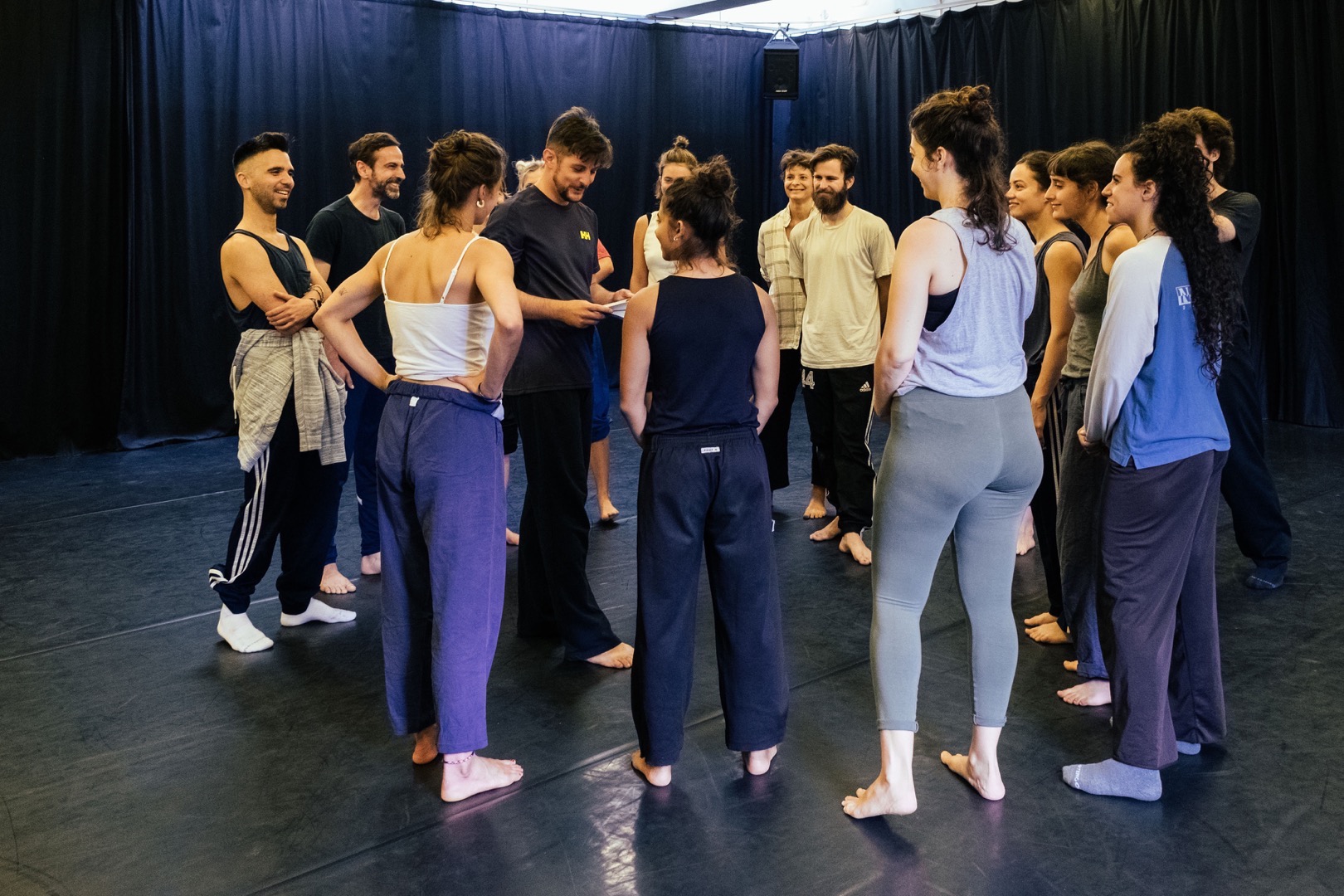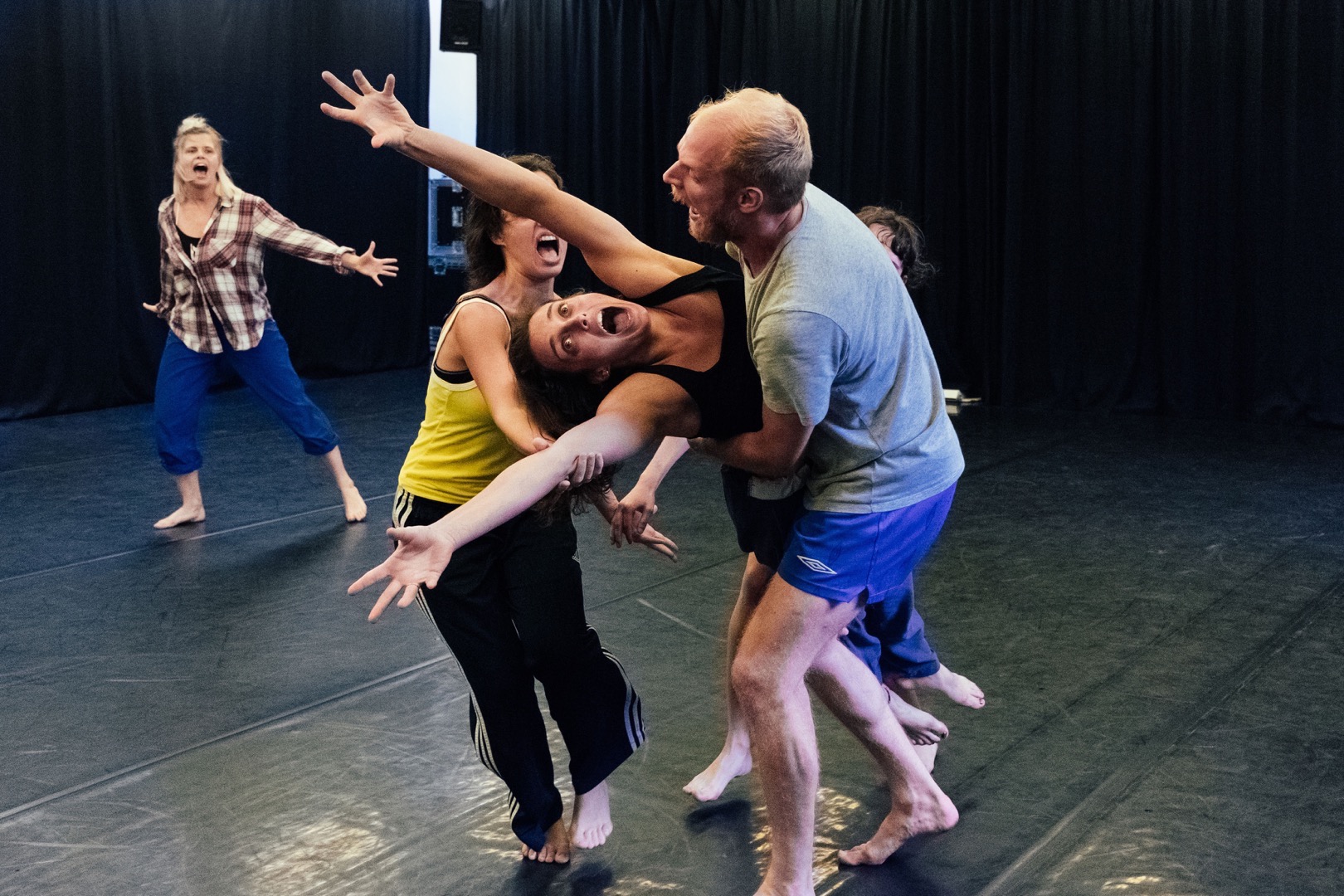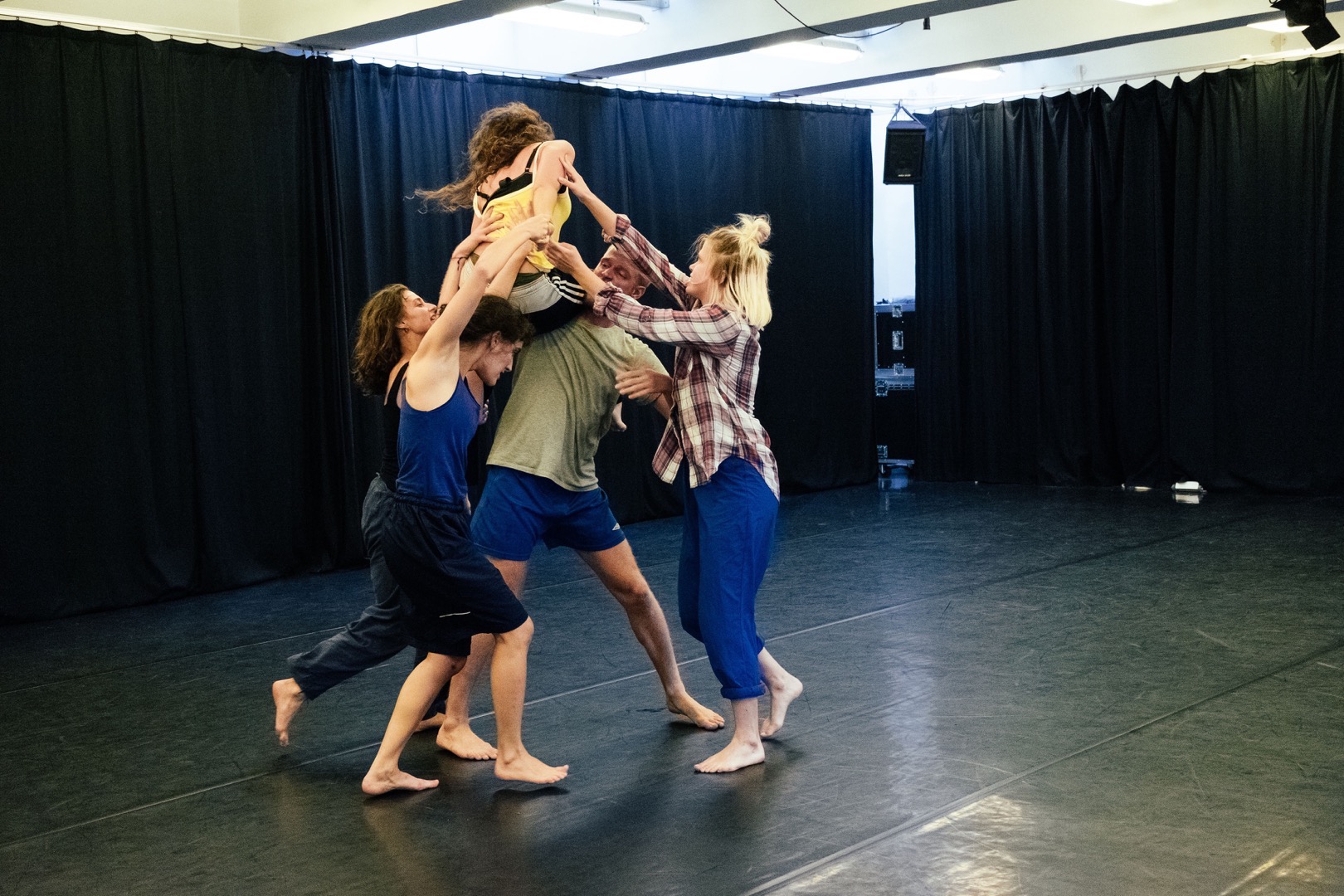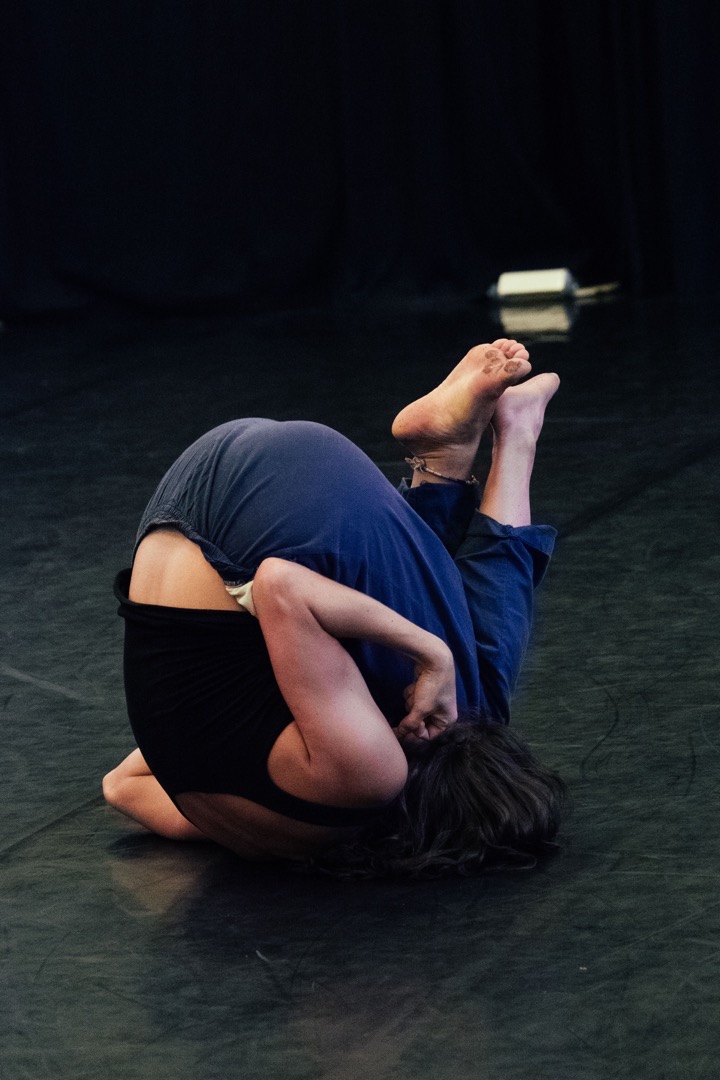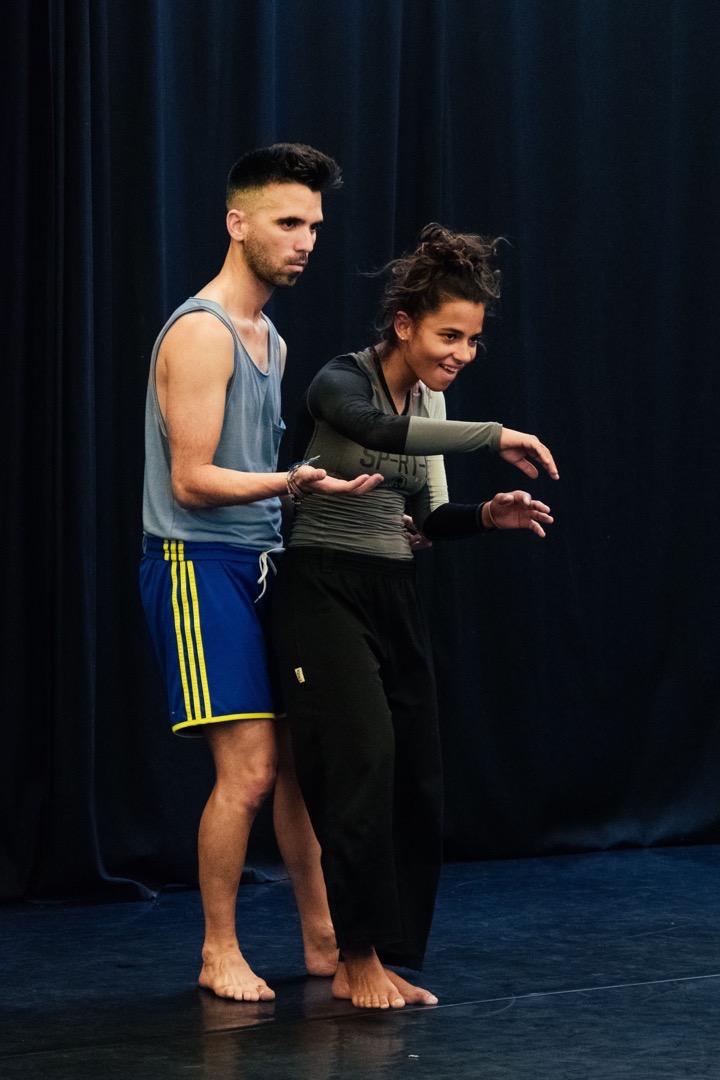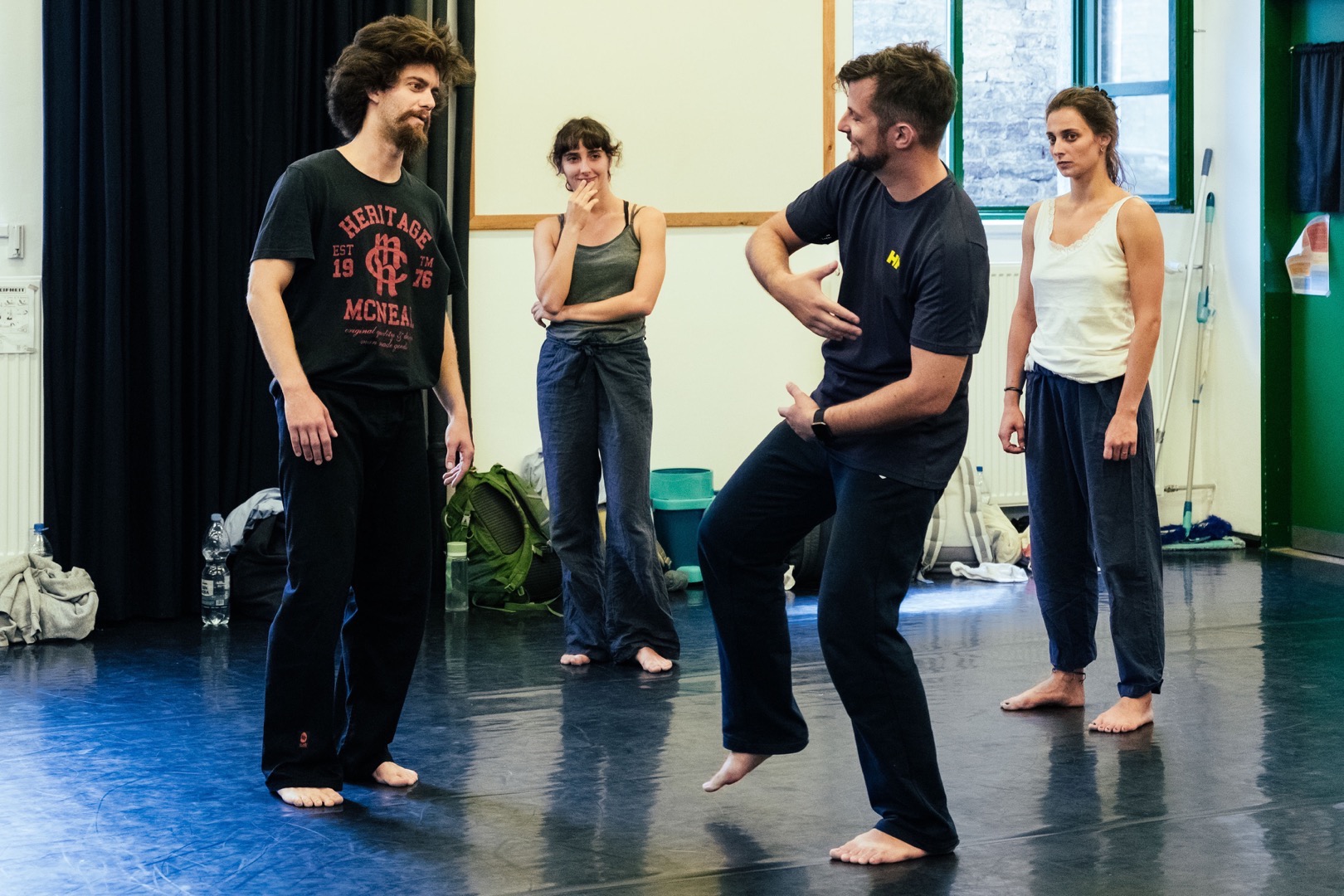“…Cities have tended throughout history to take on or conserve the religions of their hinterlands, so today there are horticulturalist cities […] Cities, however, tend to dilute the traditional faiths; and the industrialized West especially has reduced religion to an intellectual, philosophical, or psychological exercise. Western city dwellers are typically ecstasy deprived, often turning to substitutes such as drugs to satisfy genetically anchored needs. The practice of ritual postures offers a way out of this dilemma. […] institute religious trance and structure meaningful experience with the help of the postures…”
Belinda Gore: Ecstatic Body Postures – An Alternate Reality Workbook

Dates:
The workshop comes from the creative process of Gyula Cserepes’ performance by the same title, which he created in 2019. The initial idea of the artistic work was to imagine that every potential movement is already omnipresent in an empty space and the performers’ task is to open themselves mentally and spiritually, so that any of those movements could manifest physically through their bodies.
The approach to enter such a state of trance (‘rave’) was mainly based on the research and method of Dr. Felicitas D. Goodman. Her concept of the Ecstatic Body Postures serves as a starting point for the Rave workshops, as well. Combined with other practices deriving from traditional shamanism and certain oriental spiritual practices, such as yoga, Zen Buddhism or Chi Quong, the basic aim of the workshop is to provide the potential experience of trance for the participants.
A Rave workshop is less formal, more relaxed than dance workshops usually are. It usually begins with a ritual using one of the Ecstatic Body Postures. This is followed by guided improvisations in couples and smaller groups. Each participant gets the chance to get in touch with, discover and develop her/his very unique, personal way of moving. The introduced tools help to get more relaxed about the way one moves and could be applied in further dance practice, as well in any sort of social situation where we would feel like dancing – let it be a party, a wedding or hearing a beloved tuned on the radio while cooking in the kitchen.


